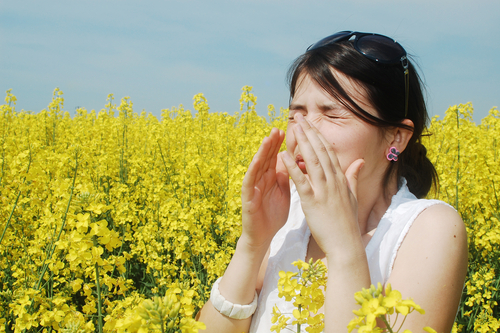Is It Dry Eye Or Allergies?in Boston, MA

Itchy, irritated eyes are the worst. But sometimes not knowing what’s causing the irritation is even worse.
Many people suffer from allergies, especially from tree pollen and environmental changes in the spring. Many people also suffer from dry eye, a condition that occurs when the eye doesn’t produce enough tears.
Since these two conditions are both common, it can be hard at times to tell which one you have. Keep reading to learn more about the differences between dry eye and allergies!
Allergy Symptoms
When allergies make your eyes red and itchy, it’s known as allergic conjunctivitis. Conjunctivitis is what causes eyes to become irritated and itchy.
Rubbing or scratching at or around the eye aggravates symptoms. The eyes also tend to water more as a result.
Dry Eye Symptoms
Some of the symptoms of dry eye are similar to the symptoms of allergic conjunctivitis. Dry eye occurs either when our eyes do not produce a sufficient quantity of tears, or when our eyes produce poor quality tears. When the eye isn’t properly lubricated, it can result in red, irritated, and watery eyes.
The eyes may also feel itchy. The main symptoms of dry eye are the feeling of grit in the eye and a burning or stinging sensation.
Diagnosis
To diagnose your condition, your eye doctor will discuss your symptoms with you. If your eyes feel very itchy but not like they’re burning, you may have allergic conjunctivitis.
If your eyes feel like they have something in them that you can’t rub out and are burning, you may have dry eye.
Dry eye is also more common in women than in men. This is often due to the body going through hormonal changes like pregnancy or menopause. Women experiencing hormonal changes and eye irritation who do not have allergies may have dry eye syndrome.
Treatment
Most allergies are easily treated with antihistamines, mast cell stabilizers, or steroids. These medications can come in pill form or as eye drops.
Sometimes, using a cool compress can relieve mild symptoms. If symptoms are severe, prescription medication may become necessary.
For many sufferers of dry eye, artificial tears are enough to help ease symptoms. Sometimes using these eye drops can help with dry eye symptoms.
Environmental changes may also help, like using a humidifier in your home or office. Your doctor can also recommend nutritional supplements that may improve your tear production.
If these treatments don’t help your dry eye, there is a non-invasive procedure that can help. Your eye doctor puts in what is called punctal plugs.
They plug eyelid ducts, using your own tears to naturally lubricate the eyes. One of the causes of dry eye can be producing low-quality tears, or not producing enough tears.
Punctal plugs help because they keep your tears in your eye longer. When tears stay on the surface of the eye longer, they are able to nourish the eye. If these plugs don’t relieve symptoms, you may need a prescription medication.
If you have problems with allergies or dry eye, you don’t have to suffer anymore! Contact Nielsen Eye Center in Greater Boston, MA to schedule a dry eye appointment!



